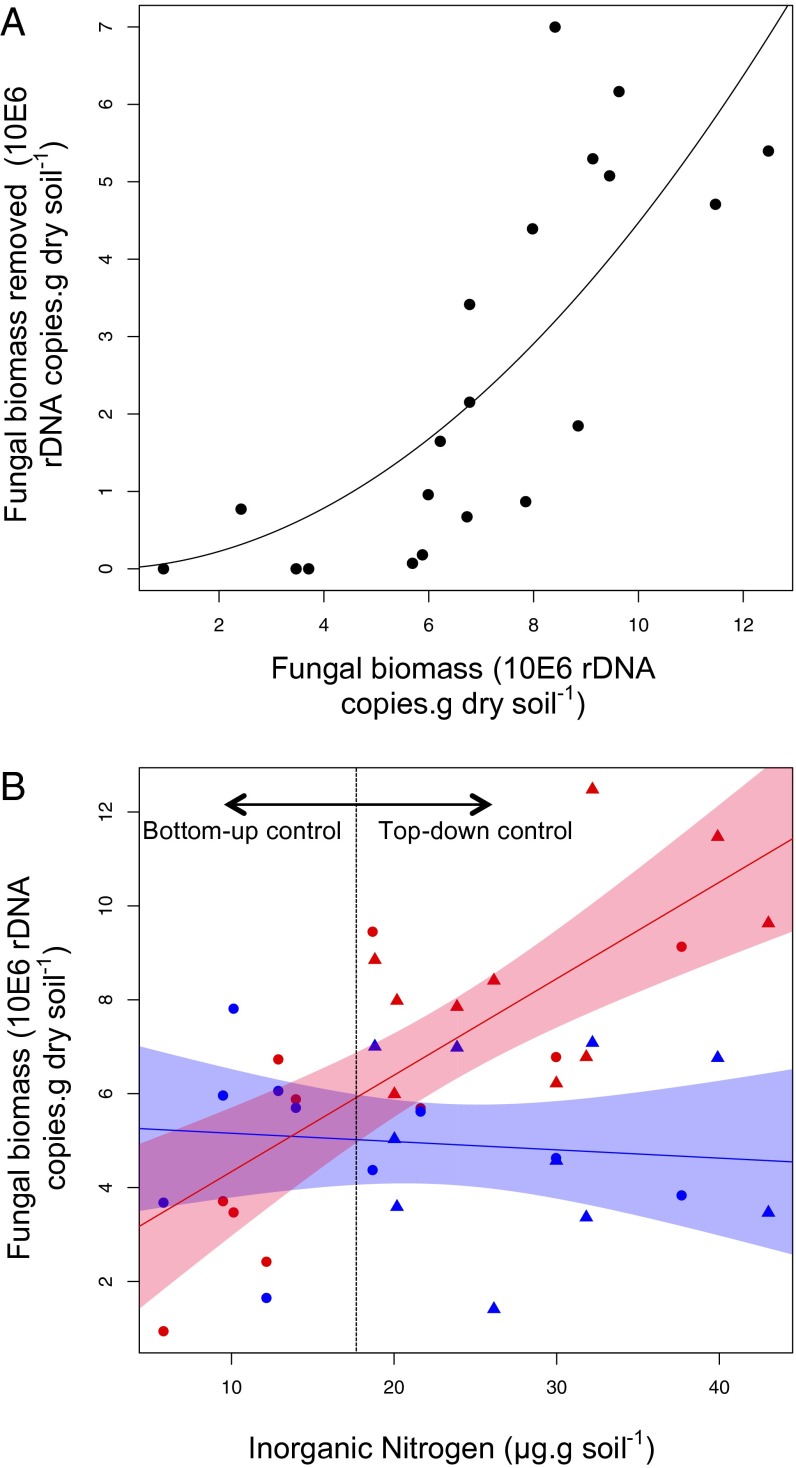Fig. 4.
Functional response of isopods along a gradient of fungal resource availability (A) and the consequences for fungal growth along a gradient of soil inorganic nitrogen availability (B). A shows how isopod grazing damage (estimated by subtracting fungal biomass in +fungal cords,−isopods chambers from that in the +fungal cords,+isopods plots), varies along a continuous gradient of resource availability. The initial lag in consumption rates is indicative of a type III functional response, as proportional grazing rates increase beyond a certain threshold of fungal availability. B shows changes in fungal biomass along an inorganic nitrogen gradient in the absence (red) and presence (blue) of grazing isopods. There were negligible effects of isopods on fungal biomass at ambient levels of nitrogen availability, but increasing fungal availability stimulated the proportional effects of grazing, mitigating the effect of nitrogen enrichment. Dots and triangles represent fungal biomass values in ambient and nitrogen-addition plots, respectively.

